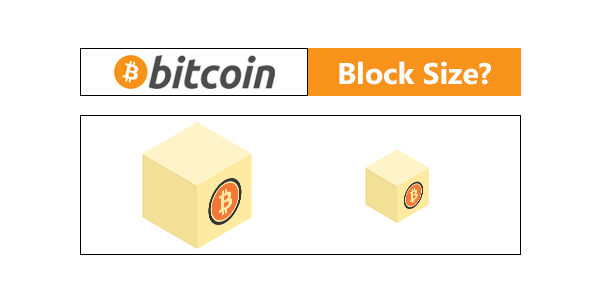Bitcoin Block Size Limit Should Be Expanded Or Not
Posted By : Kiran Bisht | 22-Jun-2015
The discussion over expanding the bitcoin block size has been a hot topic over the past several months. Let’s see if block size is really a thing to be worried about.

Does anybody care about block size?
The bitcoin block size is certainly crucial because of its important role in the future scalability of the network. Right now the limit is restricted to 1 MB on the block size that could lead to capacity problem in the coming years. With increasing transactions on the bitcoin network, the size of blocks will also get bigger bringing them almost close to 1 MB limit.
The moment it hits the maximum limit, there will most certainly be transactions that won’t get confirmed. Only a certain amount of transactions can go through the network, which also limits blockchain’s scalability. And this things has been a point of technical arguments.
The limit should be increased to give blockchain the capacity to process more transactions on a level comparable to important financial institutions, says one side of the argument. The opposite side argues, the blockchain must not to open to all transactions, and it should be reserved to only big transactions; smaller transactions can be processed by off-chain or some other sidechain alternatives.
Expanding the block size limit will also boost mining centralization
According to some arguments, increasing the limit will reduce transactions fees, and will also lead to a competition amongst miners who will undercut each other’s fees for transactions. And this dramatic fall can be unprofitable for miners and may force them to go offline. Hence, the block size should not be increased beyond the limit of 1 MB to keep fees high and stop mining centralization.
Another argument says, the supporters of the above argument disregard the fundamental causes of mining centralization. They think supporting fee with a restricted block size limit will force big miners go offline. But the size of transaction fee has nothing to do with mining centralization, and operations will keep growing regardless of block size or fees.
It doesn’t matter whether the fees goes up or fall down, organizations with economies of scale will earn better profits because they are more capable than the smaller miners. Bigger miners will easily make more profit with increasing fee, and if the fee goes down, they can handle the losses way better than small miners.
To stop mining centralization, bitcoin mining hardware manufacturers have to find out how to produce more energy efficient machines. An enhancement like this in the technology will reduce costs without using too much electricity. Therefore, mining will be decentralized, since miners will be able to profitably mine at a smaller scale.
So block size limit should be raised or not?
According to the experts, there can’t be any right or wrong answer to this question. Whether or not an adaptable or fixed block size is best depends on how the blockchain community wants to use it. But, the blockchain community is quite far from coming to an agreement on this topic, and it will take them a while to discuss. According to Mike Hearn, the blocks will touch the 1 MB limit by next year. Hence, we need to expand the limit. There may be better alternatives to a growing block size, but right now there are no functional options. All that can be done right now is to expand the block size in case touching the limit has bad effects. It may not be the best solution, but it will give developers bandwidth to come up with something better in near future.
Cookies are important to the proper functioning of a site. To improve your experience, we use cookies to remember log-in details and provide secure log-in, collect statistics to optimize site functionality, and deliver content tailored to your interests. Click Agree and Proceed to accept cookies and go directly to the site or click on View Cookie Settings to see detailed descriptions of the types of cookies and choose whether to accept certain cookies while on the site.










About Author
Kiran Bisht
Kiran Bisht is a Blogger and a Web Content Writer. She's a landscape photographer and a travel aficionado who loves traveling to the great Himalayas.